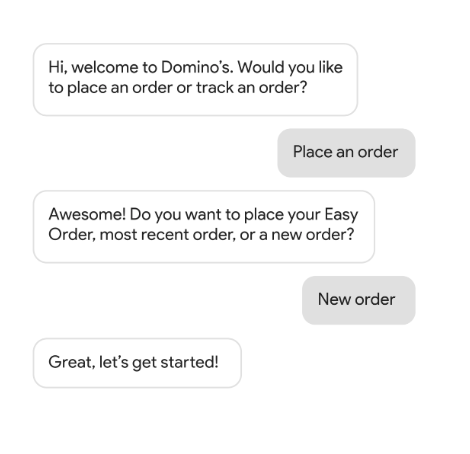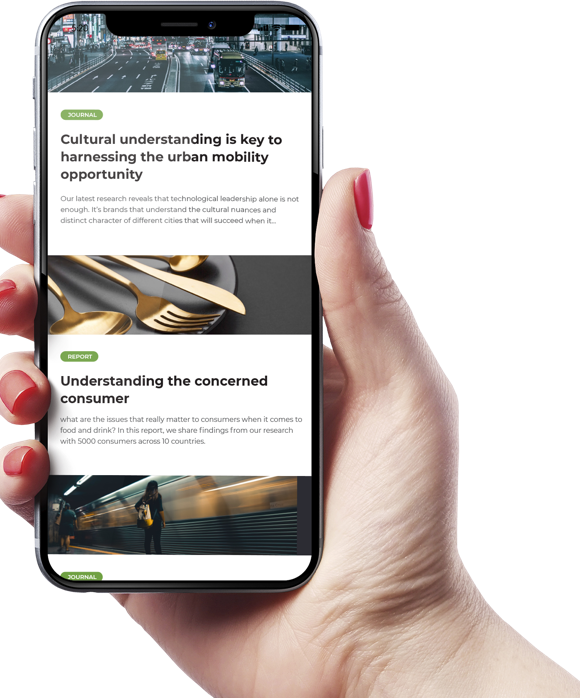Alexa, which stores have the best deals right now?
Once a futuristic notion, this question is now a reality for millions of consumers who rely on voice-activated devices for shopping lists, product recommendations, and more. As conversational AI becomes an integral part of daily life, voice-first commerce is reshaping brand engagement, challenging traditional marketing approaches, and unlocking new revenue opportunities.
But are brands truly ready for this shift?
While some have embraced the potential of conversational AI, others are scrambling to catch up, struggling to redefine their strategies at a time when hands-free shopping and personalised voice interactions are the norm.
The question isn’t whether voice commerce will dominate – it’s how soon. Brands that adapt quickly and strategically will set themselves apart in this voice-first future, while the rest risk being left unheard.
The Rise of Voice-First Commerce
Voice commerce is rapidly becoming a mainstream consumer behaviour.
The global voice recognition technology market is projected to grow to nearly $50 billion by 2029.
Consumer preferences are steering the surge in voice commerce, with hands-free convenience redefining how people shop, search, and interact. Smart speaker users now average 12.4 weekly tasks on their devices – nearly double the 7.5 recorded in 2017 – highlighting the growing integration of voice technology into everyday routines.
Brands must act now. This shift isn’t just about new tech; it’s about meeting customers where they are – on the go, multitasking, and expecting seamless experiences. For brands clinging to traditional e-commerce strategies, the window to pivot is closing.
How Conversational AI is Reshaping Brand Strategies
Conversational AI is transforming how brands interact with customers, pushing the boundaries of personalisation and engagement. Unlike traditional e-commerce, where interactions are largely visual and transactional, voice-first commerce creates opportunities for real-time, human-like conversations that build deeper connections.
Personalisation at Scale
AI-driven voice assistants use advanced natural language processing to deliver tailored recommendations. By analyzing past purchases, search history, and real-time preferences, these systems can create “segments of one,” offering highly personalised experiences. For example, a voice assistant can suggest a product refill based on a consumer’s purchase history or recommend a new service aligned with their preferences.
Improved Accessibility and Inclusivity
Voice technology breaks barriers, offering accessibility to older adults and individuals with visual impairments. For brands, this means tapping into previously underserved demographics and expanding their reach.
Enhanced Customer Service
Conversational AI is revolutionising customer support, from resolving issues instantly to guiding users through complex buying decisions. Voice assistants can handle inquiries 24/7, minimising wait times and enhancing satisfaction. Brands like Sephora and Domino’s have implemented conversational AI to simplify appointment bookings and food orders, creating frictionless customer journeys.
Challenges Brands Face with Conversational AI
The promise of conversational AI is immense, but its implementation comes with notable challenges that brands must overcome to fully leverage its potential.
Understanding Diverse Accents and Dialects
A significant barrier to effective conversational AI adoption is the ability to interpret diverse accents and dialects accurately. For instance, studies have shown that accents from regions like New York City, New Jersey, and Boston within the US market pose considerable difficulties for voice recognition systems. Distinct pronunciations and local slang in these areas often lead to misinterpretations, frustrating users and undermining trust in the technology. This highlights the need for brands to train AI models to handle linguistic nuances across regions and demographics.
Privacy and Data Security Concerns
Data privacy is another pressing issue. In a high-profile example, Italy’s data protection authority fined OpenAI 15 million euros for processing user data without adequate legal justification and transparency. The authority also cited inadequate age verification measures, exposing minors to potentially inappropriate content. These instances reflect broader consumer concerns about how personal data is collected, stored, and used in conversational AI systems.
Turning Challenges Into Opportunities
Brands that tackle these challenges head-on can gain a competitive advantage. Building AI systems that are linguistically inclusive and ensuring robust data privacy protocols will not only improve user experience but also foster trust among increasingly cautious consumers. Those proactively addressing these hurdles position themselves as leaders in the voice-first era, where reliability and consumer confidence are critical to success.
Brands Leading the Way with Conversational AI
As conversational AI becomes a cornerstone of voice-first commerce, some brands leverage its potential to drive engagement and boost sales. These early adopters offer valuable lessons for those looking to stay ahead of the curve.
Amazon’s Alexa: Setting the Standard for Voice Commerce
Amazon’s Alexa ecosystem has transformed how consumers shop, from reordering household essentials to discovering new products. With Alexa Skills tailored for brands, companies like Tide and Starbucks have seamlessly integrated into the consumer’s voice-enabled routine. Tide’s Alexa Skill, for instance, provides stain removal tips while subtly promoting its products, showcasing how conversational AI can blend utility with branding.
Sephora: Redefining Beauty Retail
Sephora has embraced conversational AI through virtual assistants that guide customers in selecting makeup and skincare products. By integrating its AI systems with Google Assistant, Sephora enables voice-driven appointment booking for beauty consultations, merging convenience with personalized recommendations. This approach not only enhances customer experience but also drives foot traffic to physical stores.
Case Study: Domino’s Frictionless Ordering Experience
Using Conversational AI

Image Credit: Shorty Awards
Since its founding in 1960, Domino’s Pizza has expanded to over 20,000 locations across 90 countries. A key milestone in this journey was the adoption of conversational AI to streamline operations and enhance customer experiences.
The Challenge
As consumer behaviour evolved, Domino’s recognised the need to offer more intuitive and convenient ordering methods. While effective, traditional online and phone orders lacked the seamless interaction modern consumers desired. The challenge was to develop a system capable of understanding and processing how customers express their orders, accommodating various accents, languages, and preferences.
The Solution

Image Credit: Google Cloud
In August 2016, Domino’s began exploring Natural Language Understanding Solutions (NLU) and ultimately selected Google’s Dialogflow for its scalability and robust NLU capabilities. This platform allowed Domino’s to handle the extensive range of customer intents and ordering options inherent in its menu. By leveraging over 60 years of customer service expertise, Domino’s developed “Dom,” an AI-powered chatbot integrated across multiple platforms, including Google Assistant-enabled devices. Customers could now place orders by simply saying, “Hey Google, talk to Domino’s,” initiating a conversational ordering experience.
Implementation
The implementation process involved training the AI to manage both simple and complex ordering scenarios, ensuring it could handle the diverse ways customers might place orders. The user-friendly interface facilitated rapid development and deployment, enabling Domino’s to efficiently meet or exceed project milestones. The AI system was designed to integrate seamlessly with existing operations, providing a consistent and reliable customer experience across various digital platforms.
Results
Image Credit: Google Cloud
The introduction of conversational AI surpassed Domino’s initial expectations. The AI-powered ordering system not only enhanced customer convenience but also improved operational efficiency. The system’s performance led to continuous refinement of the conversational experience, allowing Domino’s to stay ahead of customer expectations and adapt to new interaction patterns. This commitment to innovation reinforced Domino’s position as a leader in digital transformation within the food service industry.
Learning from the Leaders
These examples highlight the versatility of conversational AI across industries. By focusing on consumer needs – whether it’s saving time, offering expert guidance, or simplifying everyday tasks – brands can create meaningful voice interactions that drive loyalty and revenue.
For brands still on the fence, these success stories highlight an essential truth: conversational AI is not a passing trend but a transformative force that will define the future of customer engagement.
The Future of Conversational AI in Voice Commerce
The evolution of conversational AI is accelerating, with innovations poised to redefine how brands engage consumers in the coming years. This isn’t just an extension of existing technology; it’s a shift toward a more intuitive, predictive, and immersive future.
Natural Language Processing Reach New Heights
Advances in NLP enable voice assistants to understand context, sentiment, and even subtle nuances in conversation. This development allows brands to move beyond basic commands and create meaningful, two-way interactions that feel almost human. Imagine a virtual shopping assistant that remembers your preferences and anticipates your needs before you articulate them.
Integration with Immersive Technologies
Converging conversational AI with augmented and virtual reality promises a new dimension of voice-driven engagement. Consumers could soon “walk” through virtual stores guided by a voice assistant, combining the convenience of e-commerce with the immersive experience of physical shopping.
Predictive Voice Analytics for Proactive Engagement
Predictive analytics powered by AI will allow brands to forecast consumer behaviour with unprecedented accuracy. Voice assistants will be able to recommend products based on upcoming events, seasonal trends, or personal milestones, creating hyper-relevant shopping experiences.
Generative AI Redefining Personalisation
Generative AI will further enhance voice commerce by creating highly customised interactions. From crafting personalised product descriptions to generating dynamic recommendations during conversations, this technology ensures every interaction feels uniquely tailored to the consumer.
The Ethical and Privacy Imperative
As the future of conversational AI unfolds, ethical considerations will take centre stage. Brands must be transparent about how they collect and use voice data, addressing consumer concerns about privacy and surveillance. Building trust will be just as crucial as building technology.
How Brands Can Prepare for the Voice-First Era
To thrive in the age of conversational AI, brands must adopt a proactive, voice-first strategy. Success will depend on blending innovative technology with a deep understanding of evolving consumer expectations.
Invest in Voice-Ready Infrastructure
Brands need robust systems that integrate with conversational AI platforms like Alexa, Google Assistant, or proprietary solutions. This includes optimizing product listings for voice search, ensuring seamless compatibility with voice-activated devices, and developing APIs for real-time interactions.
Prioritise Multilingual and Inclusive Design
Global markets demand voice solutions that cater to diverse languages, dialects, and accents. Brands must train AI systems to understand regional nuances, making their offerings accessible to a broader audience. Inclusivity should also extend to designing interfaces for users with disabilities, tapping into underserved markets.
Focus on Data Privacy and Ethical AI
Building trust is critical in a voice-driven world. Brands should establish clear policies on data collection and usage, ensuring transparency with consumers. Adopting ethical AI practices, such as eliminating bias in voice recognition, will enhance credibility and foster loyalty.
Collaborate with AI Ecosystem Leaders
Partnerships with technology giants and AI innovators can accelerate voice-first strategies. Whether leveraging Google’s advanced NLP or collaborating with Amazon on Alexa Skills, aligning with established platforms ensures smoother implementation and greater reach.
Measure and Adapt Through Key Performance Indicators
Voice commerce success must be quantifiable. Brands should track engagement rates, voice search conversions, customer retention, and satisfaction. They can continuously refine their voice strategies by analyzing these insights to better meet consumer needs.
Prepare for a Voice-Only Future
While omnichannel strategies remain vital today, brands should experiment with voice-only campaigns and interactions. Developing exclusive voice-driven experiences will help them prepare for a future where voice commerce dominates.
The transition to voice-first commerce requires foresight and innovation. Brands that invest now in building their conversational AI capabilities will not only capture today’s opportunities but also shape the future of customer engagement.
The rise of conversational AI and voice-first commerce represents a massive shift in how consumers interact with brands. From streamlining purchases to creating deeply personalised experiences, voice technology revolutionises the customer journey. But this transformation comes with a challenge: brands must act swiftly and strategically to harness their potential.
As consumers prioritise convenience and personalisation, the question for brands is no longer whether to adopt conversational AI but how to do it effectively. The future belongs to those willing to innovate, adapt, and amplify their voice.
For brands willing to invest, the rewards are clear: deeper customer relationships, enhanced loyalty, and a competitive edge in the voice-first marketplace. The future of voice commerce isn’t distant—it’s unfolding now. Is your brand ready to be heard?
Get regular insights
Keep up to date with the latest insights from our research as well as all our company news in our free monthly newsletter.





 Senior Marketing Executive
Senior Marketing Executive Sales & Marketing
Sales & Marketing General Manager PR -Internal Communications & Government Affairs
General Manager PR -Internal Communications & Government Affairs Vital Strategies
Vital Strategies
 Customer Intelligence Director
Customer Intelligence Director